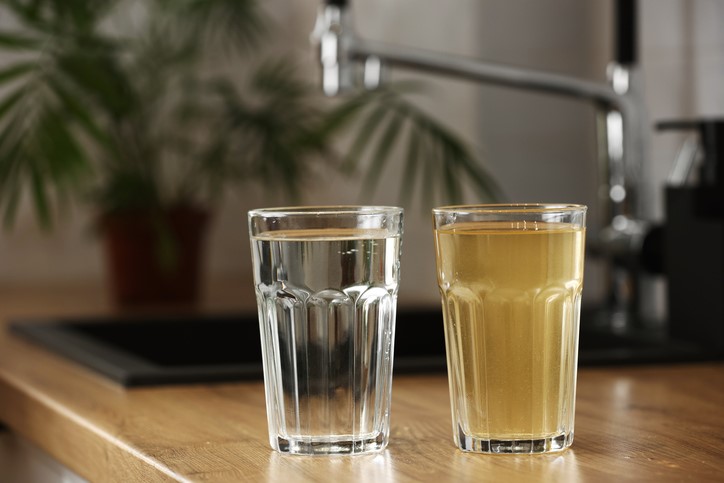Iron is a naturally occurring element found in soil and rock, and it often makes its way into groundwater supplies. While not typically hazardous to health in small amounts, iron in water can cause a range of unpleasant and costly problems for homeowners. If your sinks are stained rusty orange, your laundry comes out looking dingy, or your tap water smells metallic or earthy, iron could be the culprit.
Types of Iron in Water
There are generally two main forms of iron in water:
- Ferrous Iron (Clear Water Iron): Dissolved and invisible when first drawn from the tap, but oxidizes and turns rusty when exposed to air.
- Ferric Iron (Red Water Iron): Already oxidized, visible as reddish or brownish particles.
- Iron Bacteria: Not a form of iron itself, but microorganisms that feed on iron and produce a slimy, foul-smelling residue.
Each form causes its own set of challenges, and all of them can affect your home in more ways than you might think.
Staining and Odor: The Most Noticeable Signs
The most visible sign of iron in water is staining. Iron leaves behind reddish-brown or yellowish marks on sinks, bathtubs, toilets, and fixtures. These stains can be stubborn, often requiring specialized cleaners or repeated scrubbing to remove. Over time, they can permanently damage surfaces and leave your home looking dirty no matter how often you clean.
In addition to staining, iron can cause your water to smell metallic, musty, or even swampy—especially if iron bacteria are present. This unpleasant odor can make drinking, cooking, or bathing less enjoyable and can be a major red flag for underlying water quality issues.
Plumbing and Appliance Damage
Iron in water doesn’t just affect the way your home looks and smells—it can also do serious harm behind the scenes. As iron oxidizes, it forms particles that can clog pipes, restrict water flow, and reduce water pressure. Over time, these blockages can lead to expensive plumbing repairs or replacement.
Water-using appliances are particularly vulnerable. Dishwashers, washing machines, and water heaters can all suffer from iron buildup, which decreases efficiency and shortens their lifespan. Iron deposits inside water heaters, for example, can insulate heating elements, forcing them to work harder and use more energy. Left unchecked, iron can significantly increase your maintenance costs.
Laundry Woes: Ruined Clothes and Fabrics
If you’ve noticed your white laundry turning yellow or developing reddish streaks, iron in your water is likely to blame. It reacts with laundry detergents and fabric softeners, leading to discoloration and dingy fabrics. The more iron in your water, the more likely your clothes will come out of the wash looking worse than when they went in.
Not only is this frustrating, but it also means replacing clothing and linens more frequently—adding unnecessary cost to your household budget.
What You Can Do About It
If you’re dealing with iron in your water, the good news is that there are solutions. Depending on the type and concentration of iron, options include:
- Sediment filters for particulate iron.
- Oxidation filtration systems for higher concentrations.
- Water softeners (for low levels of ferrous iron).
- Chlorination or hydrogen peroxide systems to control iron bacteria.
Testing your water is the first step. Once you know what type and level of iron you’re dealing with, you can choose the most effective treatment.
Final Thoughts
Iron in water may not be dangerous to your health, but it can certainly be a danger to your home’s appearance, comfort, and infrastructure. From unsightly stains and bad odors to damaged appliances and ruined laundry, the problems it causes are both annoying and expensive. Fortunately, with the right filtration and treatment system, you can restore your water’s clarity, taste, and safety—and protect your home in the process.
If you’re interested in clean water in your home – schedule a free, no-obligation in-home water analysis with an Artisanal Water local expert.
Call (704) 315-6344 or fill out our contact form.
